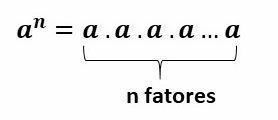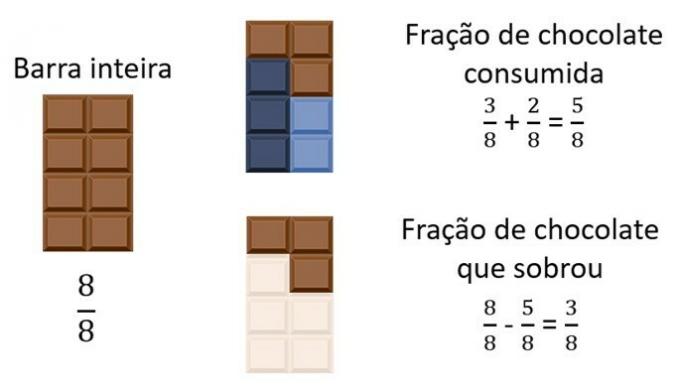THE potentiation or exponentiation is the mathematical operation that represents the multiplication of equal factors. That is, we use potentiation when a number is multiplied by itself several times.
To write a number in the form of potentiation we use the following notation:

If a ≠ 0, we have:
a: Base (number being multiplied by itself)
n: Exponent (number of times the number is multiplied)
To better understand the enhancement, in the case of number 23 (two to the third power or two to the cube), we have:
23 = 2 x 2 x 2 = 4 x 2 = 8
Being,
2: Base
3: Exponent
8: Power (product result)
Potentiation Examples
52: reads 5 to the second power or 5 to the square, hence:
5 x 5 = 25
Soon,
The expression 52 equals 25.
33: reads 3 to the third power or 3 to the cube, hence:
3 x 3 x 3 = 27
Soon,
The expression 33 equals 27.
Potentiation Properties
- Every power with an exponent equal to zero, the result will be 1, for example: 50=1
- Every power with an exponent equal to 1, the result will be the base itself, for example: 81 = 8
- When the base is negative and the exponent is an odd number, the result will be negative, for example: (- 3)3 = (- 3) x (- 3) x (- 3) = - 27.
- When the base is negative and the exponent is an even number, the result will be positive, for example: (- 2)2 = (-2) x (-2) = +4
- When the exponent is negative, the base is inverted and the sign of the exponent is changed to positive, for example: (2)- 4 = (1/2)4 = 1/16
- In fractions, both the numerator and denominator are raised to the exponent, for example: (2/3)3 = (23 / 33) = 8/27
Learn more about potentiation properties.
Power Multiplication and Division
In the multiplication of the powers of equal bases, the base is maintained and the exponents are added:
Thex. They = thex+y
52.53= 52+3= 55
In the division of powers of equal bases, the base is kept and the exponents are subtracted:
(Thex) / (They) = thex-y
(53) / (52) = 53-2 = 51
When the base is in parentheses and there is another exponent outside (power power), the base is kept and the exponents are multiplied:
(Thex)y = thex.y
(32)5= 32.5 = 310
Read too:
- Potentiation Exercises
- Exponential Function
- Numerical Expressions
- Radiation
- Radiation - Exercises
- Rationalization of Denominators
- Cientific notation
- Scientific Notation - Exercises
- Square Root Calculation
- perfect square
- Potentiation and Radiation


